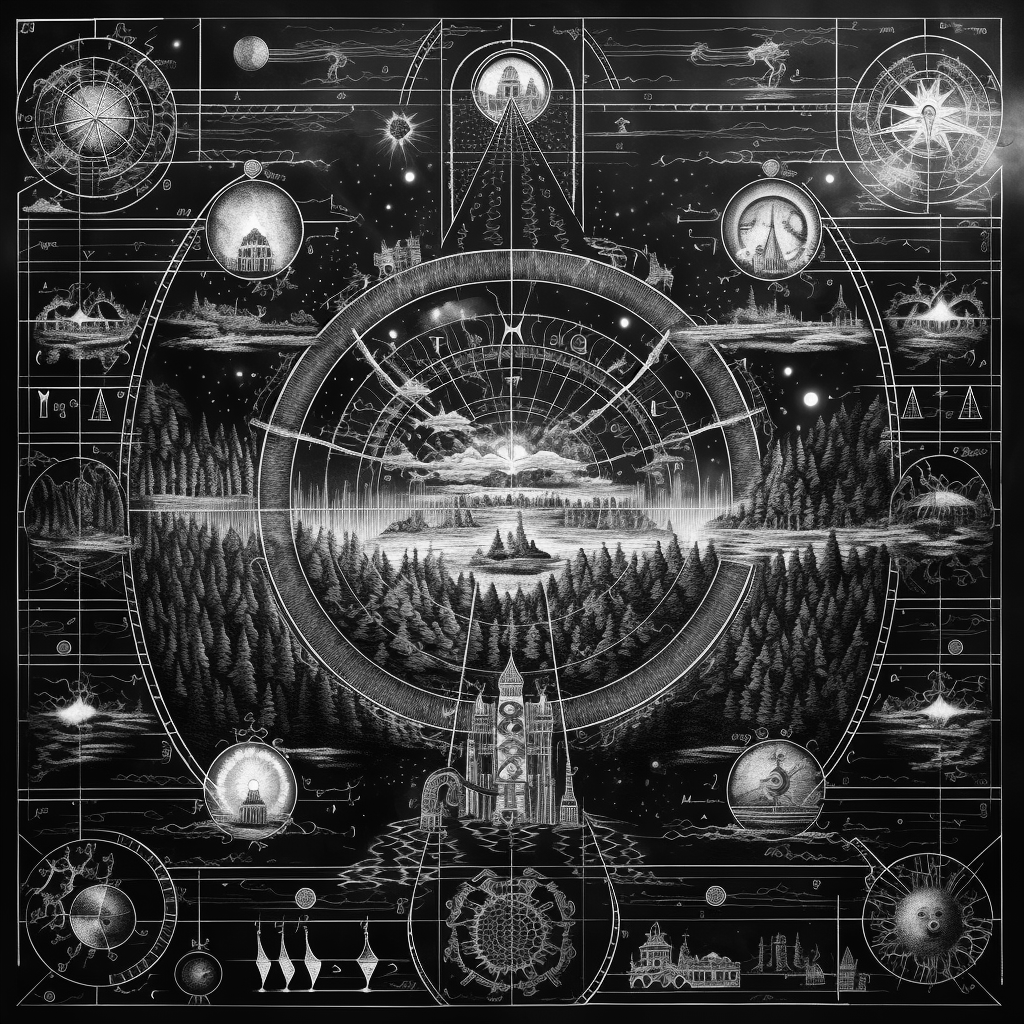Exploration within a setting necessitates that a character moves from one place to another. The Augurs approximate the scope and limitations of movement based on the context of the environment and the intent of the characters. Regardless of their means of motion, a character can choose to move anywhere the player desires so long as the area is deemed physically or socially accessible, at the discretion of the narrator.
In open play, movement over the course of a round is commonplace and will not require any attention apart from a player’s directions and locations for the character. In focused play, however, a character’s movement will be consequential in moments of game play where space and time intersect in the context of mediation. This intersection of space and time is known as a character’s pace.

Pace
A character’s pace directs the flow of a scene, and it indicates the character’s movement rate—the total distance a character can keep pace in any accessible direction. Additionally, a character’s movement rate is measured in either standard conditions—traveling outdoors in good weather with good sight lines—or in limited conditions—traveling indoors, underground, or in inclement weather or under limited sight conditions. Limited conditions typically slow a character’s movement rate by half. Players can determine the character’s pace by way of their contexts and intended actions.
| Pace | Corresponding Conditions |
| Guarded | Meticulously searching one’s surroundings, taking care to move quietly and cautiously to avoid potential dangers |
| Leisurely | Moving comfortably or casually, keeping aware of surroundings but traveling at a relaxed and calm rate |
| Brisk | A rapid, determined intent, such as while marching, in combat, or traversing the roads between settlements |
| Hurried | Hurried movements, fleeing danger, rushing from one location to another with only the destination in mind |
Movement rates in standard conditions reflect an average distance traveled at a pace during a unit of time with no external hindrances.
| Pace | Turn | Round | Cycle |
| Guarded | 10 ft. | 200 yds. | 3 mi. |
| Leisurely | 20 ft. | 400 yds. | 6 mi. |
| Brisk | 60 ft. | 1200 yds. | 12 mi. |
| Hurried | 120 ft. | 2400 yds. | 24 mi. |
Movement rates in limited conditions reflect an average distance traveled at a pace during a unit of time with environmental obstacles.
| Pace | Turn | Round | Cycle |
| Guarded | 5 ft. | 100 yds. | 1.5 mi. |
| Leisurely | 10 ft. | 200 yds. | 3 mi. |
| Brisk | 30 ft. | 600 yds. | 6 mi. |
| Hurried | 60 ft. | 1200 yds. | 12 mi. |
Depending on the setting, these character-specific guidelines for movement may be altered, and the Augur should establish what aspects of the setting constitute standard conditions and limited conditions. The distances noted here can be translated into whatever units of measurement most resonate for the Augur.
Additionally, characters may have access to modes of travel such as through technology, animal domestication, or other means, which serve to increase the distance traveled in any given pace. In established game compendiums, the modes of travel accessible to the character will be articulated, as will the measure by which these modes of travel will impact the average distance traveled by pace according to the core averages of the path as noted above.
Maintaining Pace
As movement requires energy, and energy must be replenished through rest, the Augurs have also established rules for continuous movement when traveling long distances. Each movement rate can only be maintained for a standard duration before the character must slow or stop to rest, reflecting the physical limits of the expenditure of energy during lengthy travels. Additionally, if players attempt to make their characters surpass these limitations of maintaining pace, they must pass an action test of some kind as outlined within the setting. Regardless of whether the collective can surpass the limitations of the standard duration of travel, each pace also has a maximum time that cannot be exceeded by the characters. These rules must be reflected within a setting’s compendium.
| Pace | Standard Duration | Max Duration |
| Guarded | 1 cycle | 6 cycles |
| Leisurely | 2 cycles | 8 cycles |
| Brisk | 1 cycle | 4 cycles |
| Hurried | 12 rounds | 48 rounds |
Uncontrolled Movement
Characters can also experience movement that has no defined pace and over which they have no control. In these instances, the pace is not as much a concern as where and how they will regain control over their own movement. In established game compendiums, the Augur will outline actions and outcomes for mediating uncontrolled movement according to the contexts of the setting.
Positioning
For the movement of the collective, positioning may serve to help players orient to their character’s surroundings, particularly in focused play. Sometimes called a “marching order,” positioning ensures that characters have their own situational awareness, and that their position and observable surroundings makes sense to the players of the scenario.
In specific game settings, there may be appropriate materials that the narrator can supply to the collective to help with understanding relative position in space and the scope of one’s surroundings.
